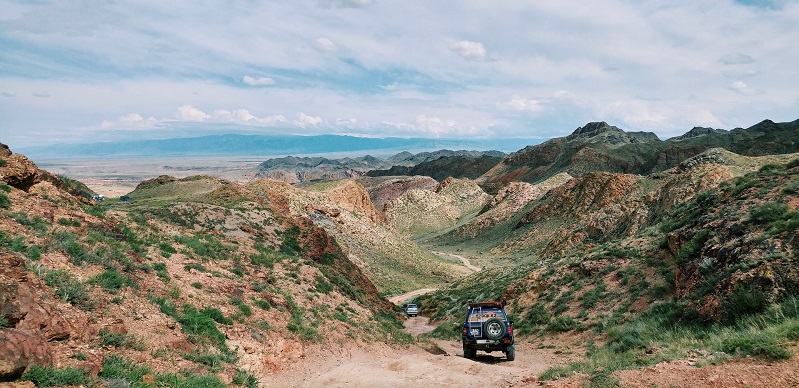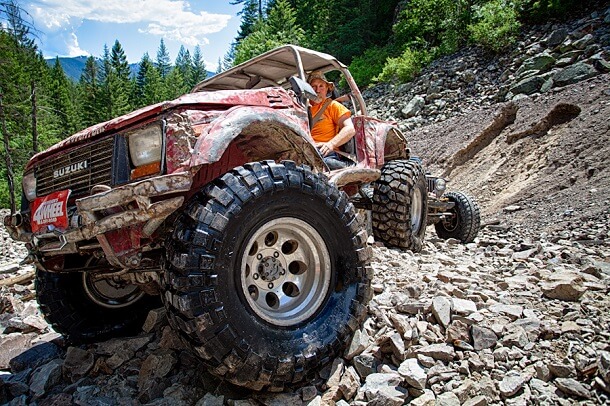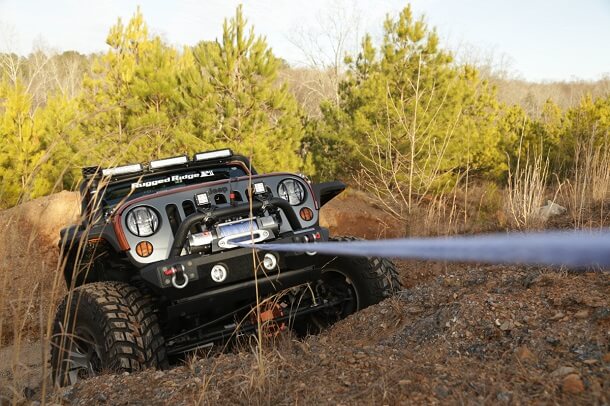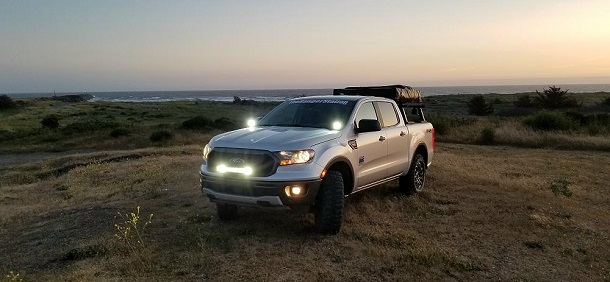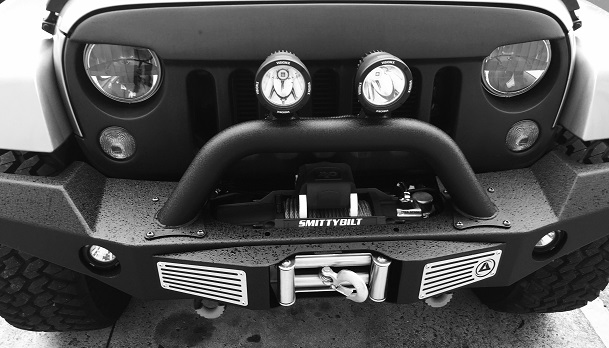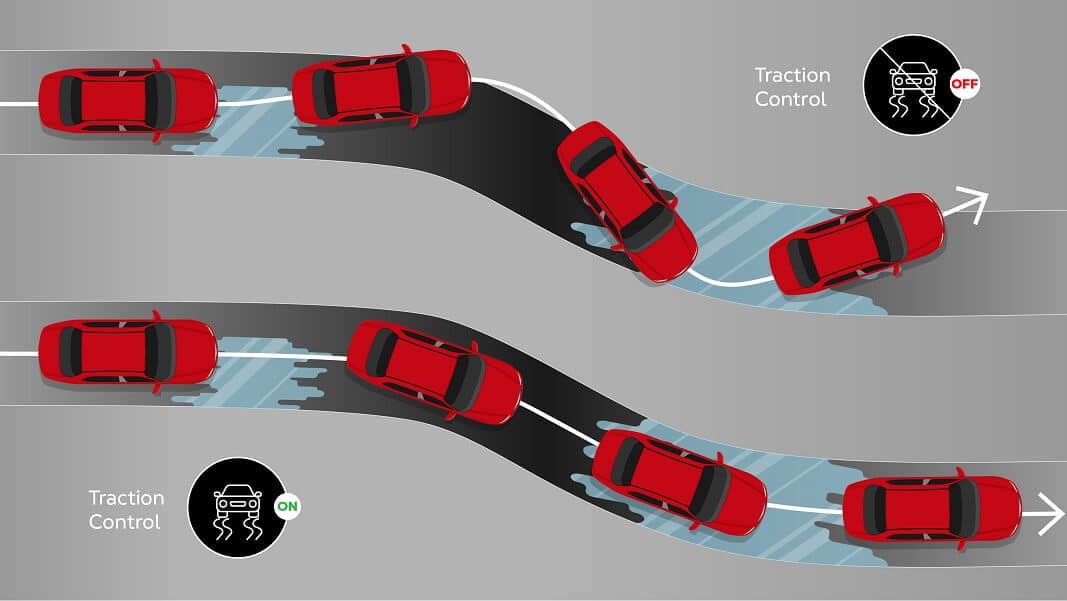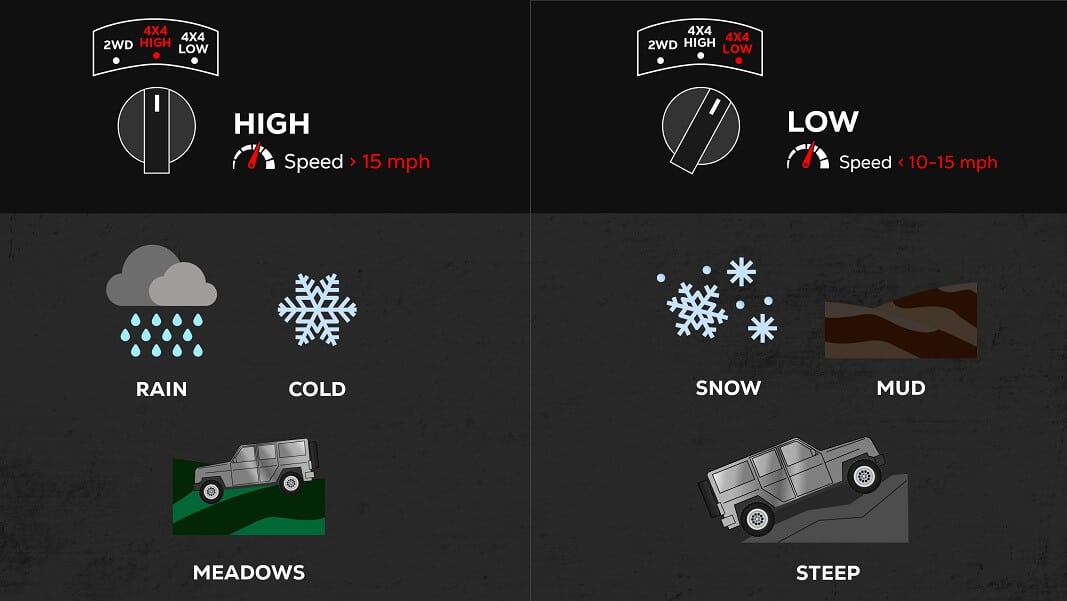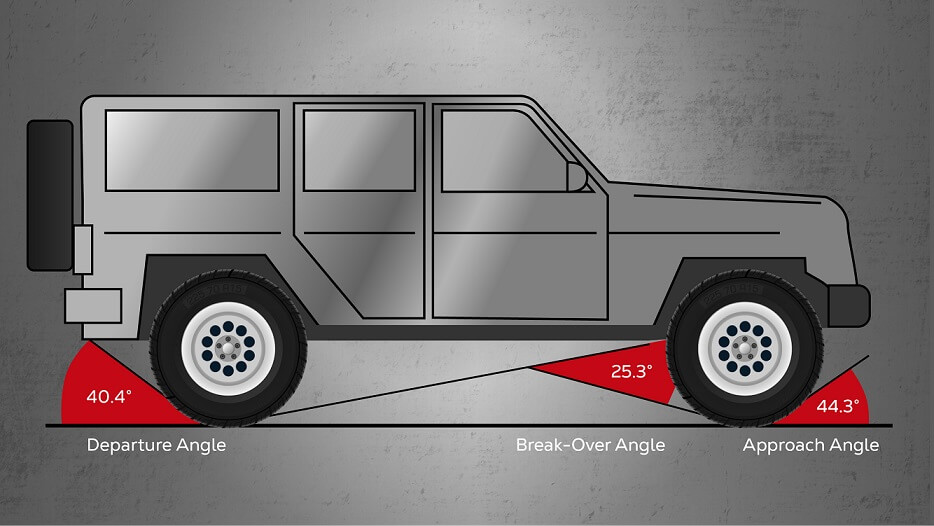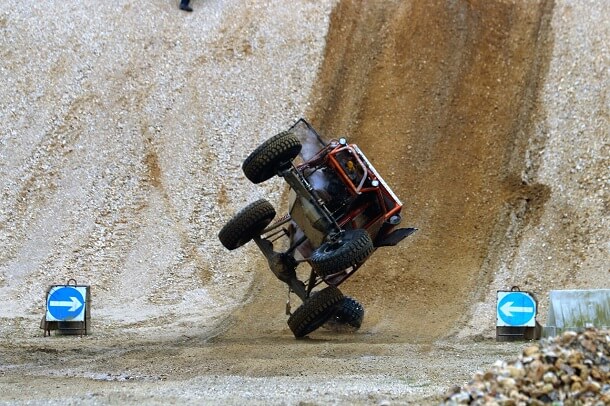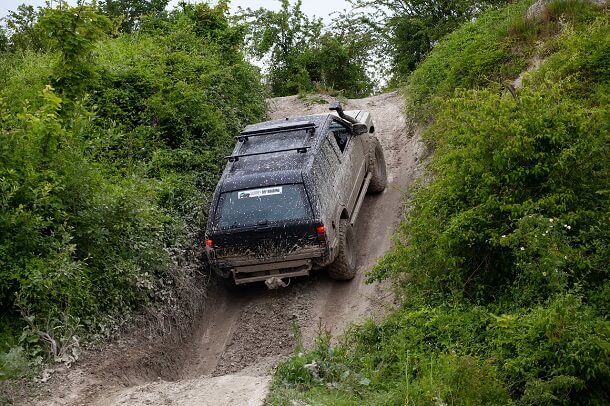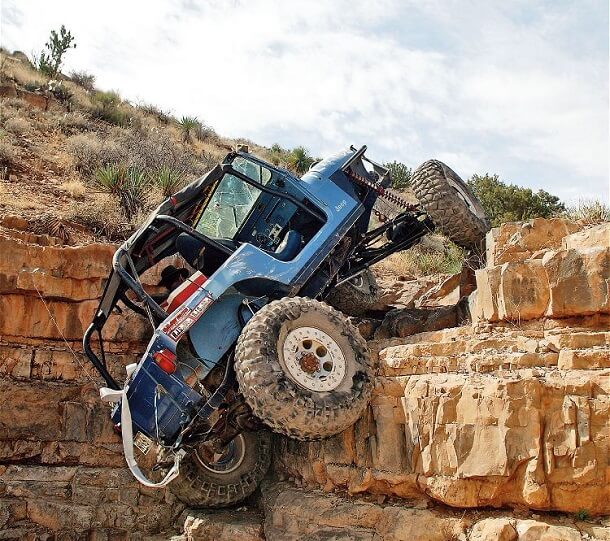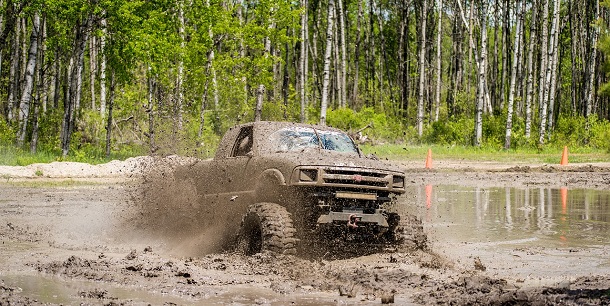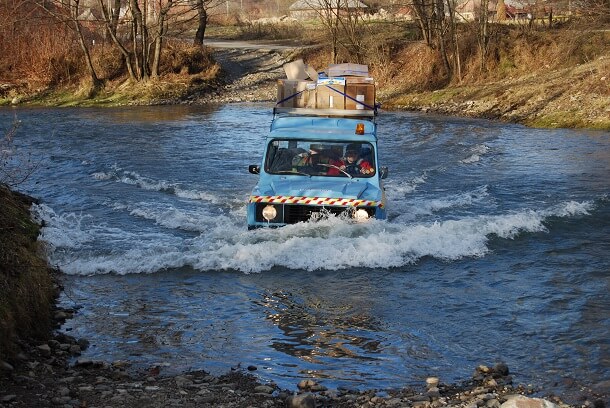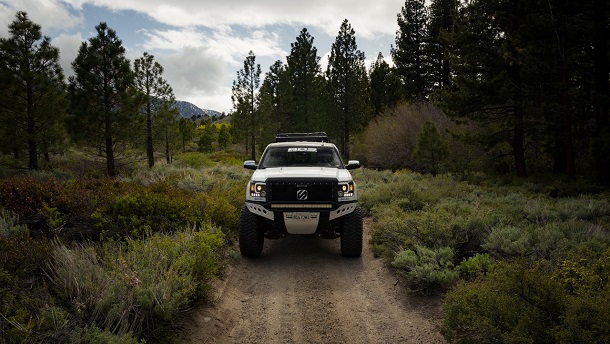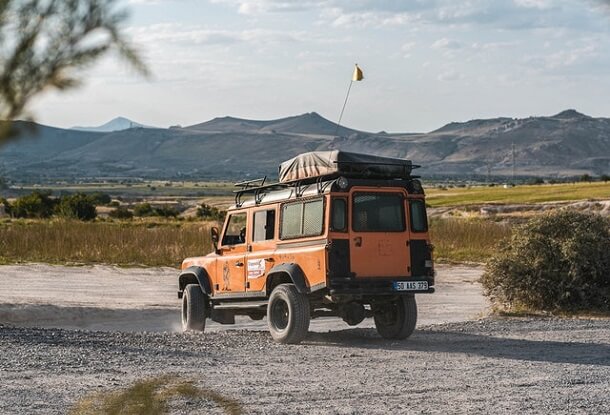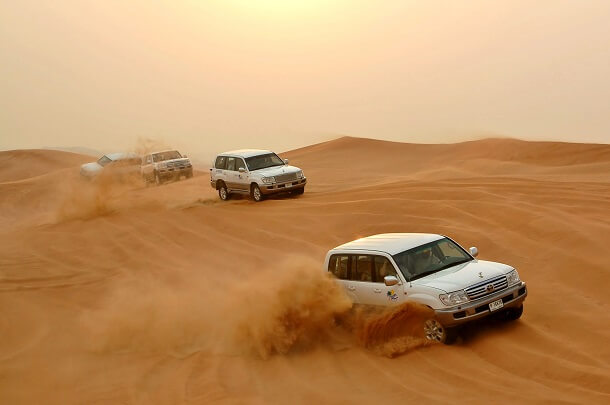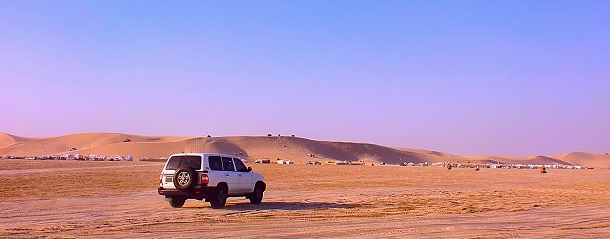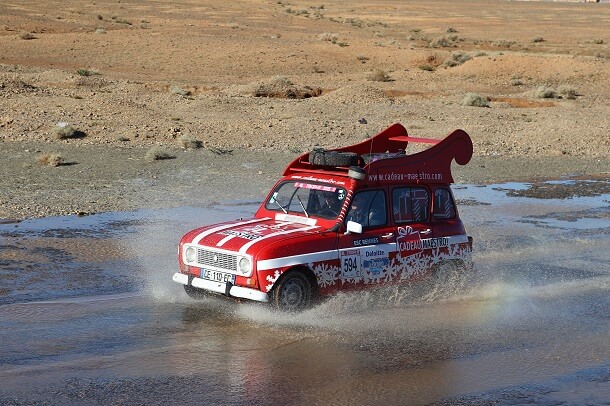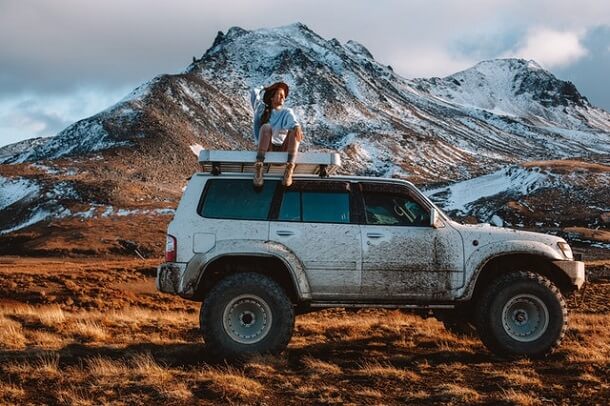Taking your four-wheel drive (4WD) off the road is always a bold decision. But once you make it, there’s no going back. Cross-country paths that run straight through lush green meadows and pools of mud to splash around in. Going off-road presents a charm that no one can resist.
But where do you even start when you want to go off-roading? For one thing, you can’t take your regular car off-road. If you’re a beginner, you’ll need to buy an off-road vehicle.
But wait… is going off-road as dangerous as it seems? We’re here to answer all of your questions. In this guide, you’ll get to know more about the type of equipment, some technical terms, types of trails, as well as how dangerous it is.
So let’s get started.
What Is Off-Roading?
Off-roading refers to the practice of driving your vehicle on roads that aren’t paved or properly established. In other words, you’re not driving on a smooth road. This can include driving on dirt tracks, through forests and cross-country trails, and even through deserts.
Essentially, an off-road vehicle will take you everywhere your regular vehicle won’t. They come in handy when venturing out to places beyond the cityscape.
In recent times, going off-road has become an entire sport, with its own equipment, vehicles, and even races.
Unfortunately, you can’t use your regular vehicle when you go off-roading. It won’t be able to survive the extreme nature of the hobby. Instead, you’ll need a separate vehicle as well as some special gear and equipment.
What Equipment Do You Need for Off-Roading?
Off-roading, much like other forms of travel requires several different equipment. We’re talking about recovery gear, lights, tires and some safety equipment.
To help you get started we have prepared a list with all crucial off-roading equipment.
Tires:
Wheel size has a strong impact on off-road performance, and so does the tread pattern and construction type. Off-roading tires are bigger in diameter than on-road tires. There is a well-known rule of thumb that you should choose a wheel diameter equal to half the total height of the tire. Tire height is measured from the base of the tire to the top when it’s already on your wheel.
Also, consider the wheel offset and backspacing when you go off-roading. This refers to how far the mounting hub lies from the wheel’s centerline.
Recovery Gear:
Off-roading isn’t the safest task, and disaster can strike anytime. This is why it’s always recommended to have recovery gear at hand. This gear, paired with the second vehicle, can help your off-roader get out if you get stuck.
The simplest recovery kit to have when you go off-roading is a couple of shackles and a snatch strap. Snatch straps can stretch up to 20%, and help pull vehicles out from pits and ditches.
If that doesn’t work out for you, you can always try a winch and hook your vehicle to it. Winches are like spools of strong rope or wire that can be cranked to pull your vehicle out.
Lights:
When you’re driving out in the night, lights are your only guide. And no, we’re not just talking about your head or tail lights. You’ll obviously need those. But you should also keep an emergency light powered by batteries that can aid you in camping as well as repairing your vehicle.
There are a few things to look for in these lights, such as battery life, brightness options, and beam pattern. Beam patterns in particular are highly crucial for off-roading.
There are four main patterns in this regard:
- Flood
- Spread
- Spot
- Driving
Here are some of the best off-road lights:
- Nilight is one such emergency light that is waterproof and flaunts a flood pattern.
- Auxbeam’s LED pods are also a great choice for their enhanced portability.
- For lighting up the camp or the trail, Autosaver88 offers these unique mounting spotlights.
Maxtrax
When your car gets stuck, you can count on your snatch straps and winches just fine, but they’re not the easiest way out. The safest and the least tiresome way is to drive out of wherever you’re stuck. And that’s exactly what a Maxtrax does.
Maxtrax is a nylon recovery board manufacturer that won’t sink into the mud or snow and can be driven on. It can also be utilized as a shovel or trowel, to dig out fire and snow pits for shelter and safety.
Emergency Gear
Emergency gear is a broad term that includes repair kits as well as communication devices and air compressors. Stock up on engine and tire repair toolkits, along with a handy manual that illustrated remedies for various situations.
For communication, either keep a regular cell phone or a radio transmitter with you. Also, keep air compressors at hand that can help vary the tire pressure and refill flat tires. Keep your personal data such as your medical information and ID in your wallet at all times.
Here are a few emergency gears you should have on you:
- Spare tire and jack
- Tow strap
- Tree saver
- Engine repair kit
- Vehicle repair and instruction manual
- Air compressor
- Fire extinguisher/blanket
- GPS or some other form of navigation
- Cell phone/SOS signal transmitter
- Personal/medical information
- Some spare flashlights
- Flares, reflectors, and other signalling items
- Spare keys
Remember: This is all in addition to your recovery gear.
Bumpers
Choosing the correct type of bumper is crucial since you never know what you might run into. Off-road bumpers look and function differently from regular bumpers.
They can take a lot more damage, distribute forces before they reach you, and better prevent collision damage.
Other Useful Things You Can Take
Portable Air Compressor
An air compressor is used to inflate or deflate the tires, depending on your needs. Carrying a portable tire compressor is a good idea since you’ll be running into flats quite often, especially when rock climbing.
The compressor can also be used to vary tire pressure according to the trail where you’re riding. Some people prefer lower tire pressure since it contorts around obstacles better.
Suspension
Driving through jagged rocks and steep hills, you’ll want a good suspension system. There are a number of different types of suspensions, which we won’t be able to list down here. Your four-wheel-drive already comes with a suspension built-in, but you’ll still want to augment it if you’re going for a rougher course.
Snorkel
It might seem unnecessary and rather absurd in this context, but there are some snorkels made for vehicles too. This allows air to pass through the car and ventilate the interior but only do so at a certain depth.
They come in handy when you’re water fording, as accidents happen all the time. Getting a personal snorkel for yourself is a good idea too since you might have to escape the car if it’s flooding.
First-Aid Kit
When you want to go off-roading miles away from the nearest hospital, doing your own medical work is essential. Sure, no one’s expecting you to stitch yourself. But carrying some basic equipment such as a thermometer, Band-Aids, and a tourniquet may save your life.
Fire Extinguisher
Fires can strike up any time since you’re overworking your engine. Carrying a fire extinguisher is always a good idea. Learn how to use one, and practice it before starting your journey. Also, make sure the extinguisher is accessible from the driver’s seat.
Don’t Forget Food and Water:
You need to carry a lot of food and water. Since you might be out for days if you plan on camping, stock up on food that can provide good nutrition. So no bags of chips or instant noodles. Take full meals with you. It’s best to take canned products since they don’t require refrigeration. As for water, carry lots of bottles with you, and perhaps a mini cooler to keep your drinks fresh and ready for the journey.
Technical Terms You Need to Know (And Understand):
Traction Control:
Driving off-road through the toughest of obstacles can wear down your tires. A Traction Control System (TCS or ASR) is a type of electronic function that prevents wearing down of the tread pattern. It’s crucial for maintaining the good off-road performance of your tires and to increase their lifetime.
You normally get the option to turn it on or off. It helps you maintain balance and control of the vehicle on slippery surfaces. It’s used in place of the locking differential in your car. You should keep it on at all times, but don’t expect it to work well with snow tires.
High Vs. Low 4×4 (rights reserved):
You may have come across the term “four-wheel drive” but not understood its meaning. Don’t all cars run on four wheels? Well not exactly…!
To save power and keep the front and rear wheels in sync, only the rear wheels are on at normal road conditions. The front wheels are driven forward by the movement of the rear wheels.
In a four-wheel drive, however, both the front and rear wheels are actively participating. This is also referred to as the 4×4 drive (four wheels on the vehicle and four are on at any given time). It allows for more traction and keeps you grounded under all driving conditions.
High and Low 4×4 refers to the types of driving speeds. High 4×4 should be turned on when riding at speeds of over 15 mph, and low when you’re driving below that.
Approach Angle and Locking Differentials:
The approach angle is the maximum slope angle onto which your car can climb. It is measured between the road and your front bumper. The more space beneath your car, the easier you can climb slopes. Similarly, the departure angle is the angle measured between your back bumper and the road.
Race and sports cars are subject to lots of stancing by their owners. But you never want to modify the locking differentials and stance of an off-roading vehicle. You need that extra ground clearance beneath your car.
Tips for Driving Off-Road
1. Stay Within Your Limits
This is the first and most important pointer to always keep in mind. Only go so far as your body, car, and capabilities allow you to. Don’t try to drive on riskier tracks if it means putting your life or equipment in danger.
If you’re completely new to this, it’s recommended to either start with cross-country, green laning, or hill climbing.
The limits of your car are just as important too. Don’t push your car to its extreme limits. And always upgrade the system if you’re going on an unfamiliar type of track.
2. Bring A Friend (If Possible, With Another Vehicle)
Many people agree that off-roading is best left off as a personal hobby, one where you can get a break from society. However, due to the nature of some trails, bringing a friend along becomes crucial. Imagine you’re trapped in a ditch and you need to pull your car out. You’ll need a second vehicle to pull you out of it.
You’ll want to bring a friend along when going on muddy, hilly, or rocky trails. Even if they don’t have another vehicle, bringing a friend is always a great idea. They know all your personal data, such as your blood type and home contact.
3. Air Down Tire Pressure:
In recent years, a lot of motorists are turning down the pressure in their tires to get better traction. This may seem counterintuitive since we’re used to the notion that more pressure means tauter tires. However, turning down the pressure a bit can help you drive over obstacles easily.
Conversely, turning up the pressure will provide more buoyancy, so it’s great for roads that aren’t too rough. However, almost all off-roaders keep the pressure in their tires low. If you’re unsure, you can carry a portable air compressor with you and tune the pressure on the go.
4. Check the Depth:
This goes particularly for those who like to indulge in water fording. Water fording is a highly dangerous sport that requires you to off-road through shallow streams and rivers. There’s a lot you need to consider before you immerse in such an activity. But you also need to check the depth of the water body. Try stepping in it or using a long stick to ensure your engine will always stay above water level.
5. Know Your Vehicle’s Capabilities:
Finally, you need to be familiar with your vehicle. It’s highly essential with any type of driving. And with off-roading, the need is even direr. The main two key components that can decide whether you can drive on a certain trail or not are your tires and your engine.
Your engine’s power will decide how fast you can drive, what slopes you can conquer, and what weather conditions you can survive. And your tires will also define the same, along with how well you can work around obstacles.
How Dangerous Is Off-Roading?
Many people are under the notion that off-roading is dangerous. And many times it can be. But no one said that it has to be. In fact, off-roading can be a fun and endearing activity that even some beginners can partake in.
But accidents do happen. The Consumer Product Safety Commission (CPSC) estimates an annual average of 622 fatalities related to ATVs (site may use cookies ). And approximately a quarter of those deaths are of children under 16.
Moreover, one-third of all people who suffer injuries mainly have them on the head or neck, which can prove fatal.
It’s all about what trail you drive on and how skilled you are. Buckling your seatbelts and wearing safety equipment is crucial for a safe off-road experience.
Always bring a friend along to help you out of sticky situations.
And keep your personal information on you at all times.
How to Choose The Right Type Of Off-Roading For You?
Hill Climbing
Hill climbing is a highly immersive off-roading activity that many adventurers and dirt-racers love to try. It involves climbing up steep inclines and descending valleys and canyons. And you have to do that all whilst swerving through a course of misplaced rocks and stones.
It’s closely linked with rock crawling. The only difference is that rock climbing almost always has hard-to-maneuver obstacles. Hill climbing, however, can be dangerous and risky, or soft-core and family-friendly at the same time. In fact, many people even find such tracks to be smooth enough to race on. However, do expect some form of a hindrance when driving off-road on hills. Even the smoothest hills can be a menace to climb, especially considering driving uphill is a feat in and of its own.
What to Expect:
- Involves climbing up and downhills.
- Can be both light and hardcore.
- Great for beginners.
- Challenging with amazing views.
Rock Climbing
Rock climbing is a much more advanced off-road driving choice than hill climbing. Usually, it involves the same equipment, but the heavier suspension, and a much more daring will. But that doesn’t mean rock climbing has to be hard. Various trails across the country have a different level of difficulty.
Most people, when they hear of rock climbing, want to start from the deadliest of trails. However, it is much more realistic for you to start out with a smoother trail. Those who indulge in hill climbing will find some familiarity with this trail. But depending on what type of hill you climbed, rock trails might seem more challenging.
What to Expect:
- More challenging.
- Good for intermediate drivers.
- Requires advanced equipment.
- Best to bring a friend along.
Mudding
Mudding refers to driving in the mud. That’s it. There isn’t really much to it, and you can find entire networks of mud trails across the nation. The entire activity is getting dirty and splashing around in the mud and appeals to every adult’s inner child.
But putting that aside, there is a much more practical aspect of the activity. It is to challenge yourself and see if you can get out of the mud safely. And that part of the trail becomes even more apparent when you consider the different types of muds. Sticky, slimy mud that mimics quicksand, indubitably gives you a hard time.
What to Expect:
- Lots of fun in the mud.
- Requires stronger tires.
- Bring a friend along.
- Different types of muds.
Water Fording
Water fording is a highly dangerous off-road driving activity, and we wouldn’t recommend first-timers to try it. It involves traversing through shallow or moderately deep streams and rivers. The trick here is to keep your vehicle afloat enough such that the engine stays above water-level. Once it goes below that, your car might start stalling.
Since you run the risk of actually drowning yourself, especially in deeper streams, it should be practiced with caution. But once you do indulge yourself in it, there’s no going back. Trying to fight the current and overcoming various obstacles on the floor of the river has its own appeal to it. Plus, you can get quite a good splash as you would with mudding. If your four-wheel drive is new and you’re not sure if it will survive the water damage, steer clear of water fording.
What to Expect:
- Driving through shallow water.
- Requires a high level of waterproofing.
- Most challenging of all.
- Bring a friend along with a snorkel.
Green Laning:
Green laning is the most soft-hearted, and quite frankly the most calming of all off-roading activities. In this, you simply drive through lush green trails convolving through meadows, fields, and deep, dark forests. It makes for a great bike-packing trip, as you can camp on the way and meet lots of friendly drivers.
This is the sport you should start with if you’re unsure whether you can take on hill climbing. The best part is, you don’t need a lot of equipment for it. Any type of four-wheel drive will do for this job. Furthermore, there are miles of trails to discover. And many carry a lot of cultural significance as well, cutting straight through ethnic communities.
What to Expect:
- Cruising through prolific forests.
- Great for spending alone time.
- Good for bike-packing.
- Highly refreshing with spectacular views.
Cross Country
Cross country is a broad term that points to any type of off-roading done on long trails across the countryside. But unlike green laning, cross-country riding doesn’t have to be green. We’re talking dirt roads and hill tracks that run through large countryside settlements. Think of it like green laning, but with more things to see and do.
As such, there will be more obstacles along the way as compared to green laning. But you do get the option to camp, go in groups, meet fellow off-roaders, and partake in or spectate races. It’s a whole sport on its own. And the availability of trails with varying difficulty levels means you choose how adventurous the journey will be.
What to Expect:
- A little bit of everything.
- Variety of trails to choose from.
- Can be light as well as hardcore.
- Can be competitive too.
Dune Bashing
Dune bashing, as the name suggests, is a type of off-roading for deserts. But you can enjoy it in lesser extreme environments as well, such as sand trails and large unoccupied fields. Dune bashing requires you to successfully traverse across sand dunes, small hills, and rocks.
Due to the extreme nature of the sport, it’s relatively not for newcomers. It is best to go in groups, in case of an emergency.
What to Expect:
- Climbing up and down dunes.
- Hot and arid climate.
- Does not have a diverse community.
- Bring lots of refreshments and a map.
Desert Riding:
Desert riding is a similar activity to dune bashing, except it isn’t as competitive. Essentially, the terms are interchangeable, so there’s no clear difference. But while dune bashing is more of a competitive sport, desert riding can be enjoyed as a personal experience.
Admittedly, there isn’t much to enjoy. The extreme heat and dryness will get the best of you, not to mention the loneliness. You need to stock up on lots of refreshments and drinks, and always know the way out. It should also be noted that desert riding is mostly done at high speeds, so know the threshold of your vehicle.
What to Expect:
- Casually cruising through the desert.
- A great experience with friends.
- Can be enjoyed personally too.
- A harsh climate may be too challenging.
Raid
Rally raiding, or cross-country rallying, is a type of long-distance racing off the road and can last from two days to over two weeks. It’s usually held on cross-country tracks, meaning it runs through dirt roads and lush greenery.
Marathon rallies can last for up to 15 days, and you should come prepared accordingly. There are camping and lots of socialization, as well as tons of prizes to win. Your vehicle needs to be in top condition to outrun the others.
What to Expect:
- Long-distance cross-country racing.
- Amazing rewards for winners.
- A great competitive community.
- Good start for future racers.
Snow Wheeling
Snow wheeling is what it sounds like off-roading through thick, compacted snow. However, it’s not as easy as it may sound. Not only are you going up against the elements, but you also have to take care not to disrupt the peace of the environment.
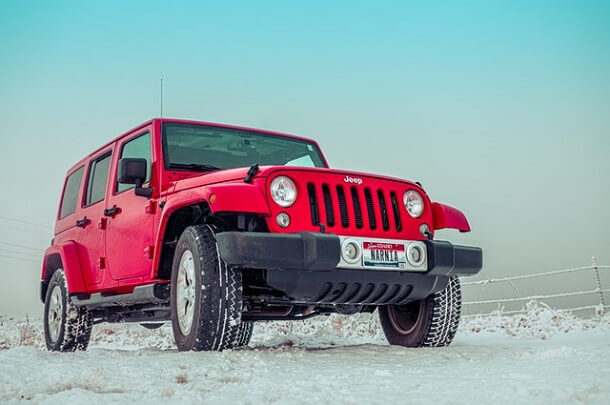
You’ll need a heavy off-roading vehicle, fitted with tires that are for snow wheeling. Also consider how your engine will perform against the cold, as many vehicles tend to stall in the winters. The weather is also an important factor to always keep an eye on.
What to Expect:
- Driving through the snow.
- Extremely harsh environment.
- Requires special snow tires.
- Weather may change any time.
Off-road Modifications
When it comes to off-roading, how can we ignore modifications?
Since off-road modification in your vehicle requires special equipment like tube notchers and benders, you need some hands-on experience. And nothing does it better than Roguefab.
Here at Roguefab, we have over 15 years of design engineering experience when it comes to manufacturing durable tube and pipe benders.
Why The Covid Pandemic Might Be Perfect For Off-Roading
The recent COVID pandemic has taken the entire world by storm, but the off-roading community couldn’t be better off. Now that you’re not using your regular vehicle on the road, you can upgrade to an off-roader. It doesn’t have to be an ATV or a heavy-duty jeep. Even an off-roading dirt bike or scooter will suffice.
Since you’ve got more free time on your hands, and people tend to stay indoors, the journey will be much more peaceful. However, do keep in mind that, if you were planning on your journey to be more social, there will be a huge disappointment.
The pandemic has cut off supply from other countries. And as such, off-road vehicles are disappearing from showrooms. So if you already own one, it’s good for you. But if you’re looking for one, you won’t find it. And you won’t find many new people on your trip either.
The drive will only get lonelier, but that’s where the community comes in. Although there won’t be many new riders, you can still find older people and socialize with them. Some places might be closed due to the pandemic, so your options will be limited.
Conclusion
Off-roading is a great experience. And with the recent pandemic overtaking the world, you’ll find the journey to be more personal, serene, and tranquilizing.
There’s a lot that goes into the hobby, such as the vehicle and the equipment. But once you’ve mastered all that, you’ll have a tremendous time riding through the quiet cross-country trails. It’s not hard. Off-roading, when done on smooth tracks, doesn’t require much driving skills other than the ones you already have.
When going up against rougher trails, however, you’ll need more skills, and not to mention better equipment. Get the right equipment and go fully prepared.
All in all, it’s a great activity that becomes even more endearing during this pandemic and you may earn new experiences. So, don’t let this opportunity go to waste and start on your first off-road journey.
